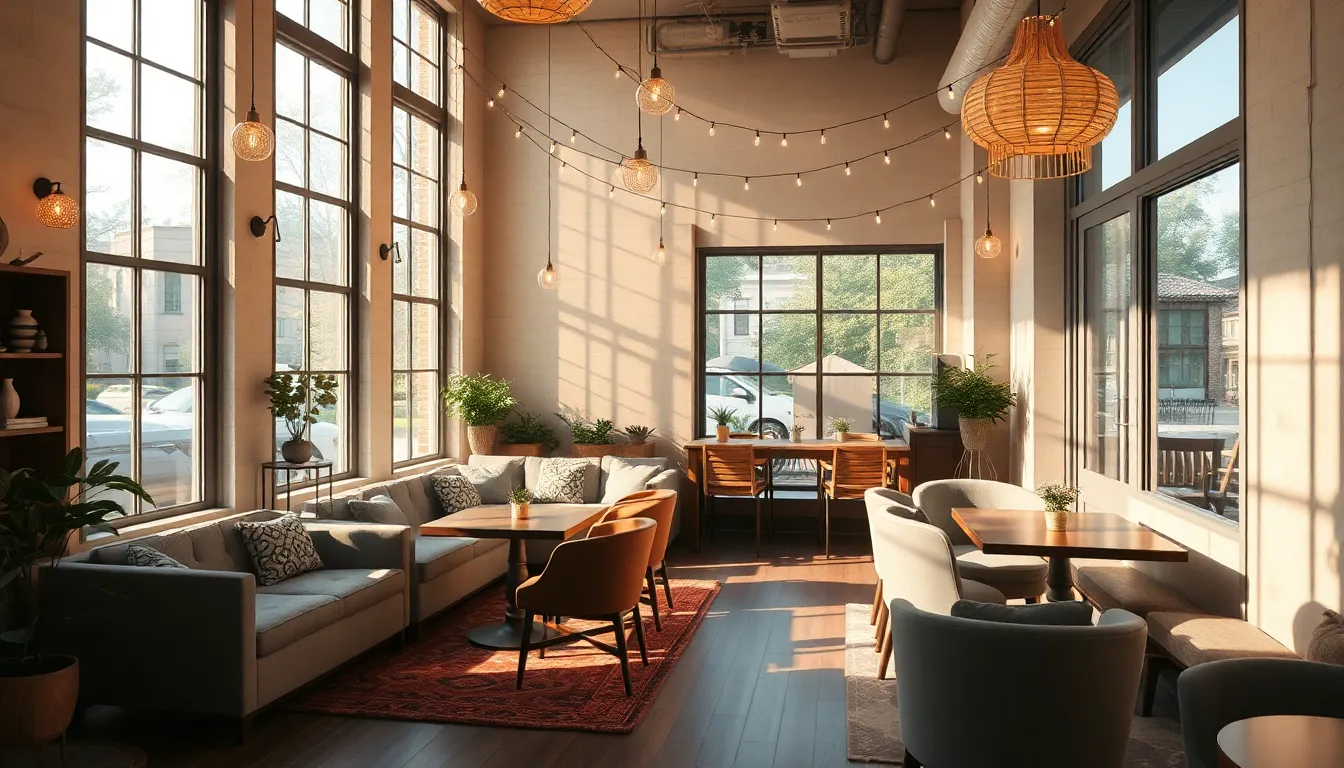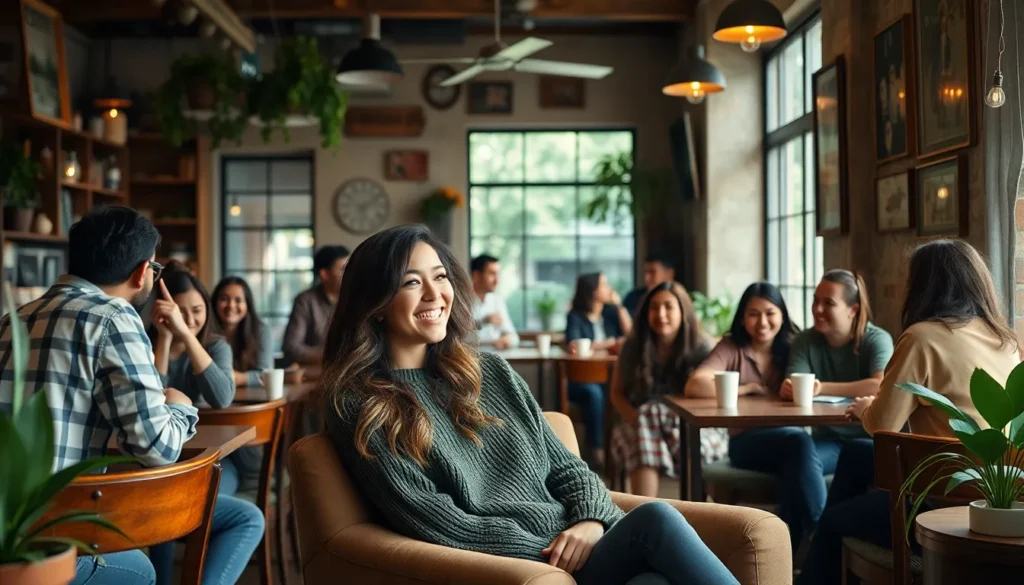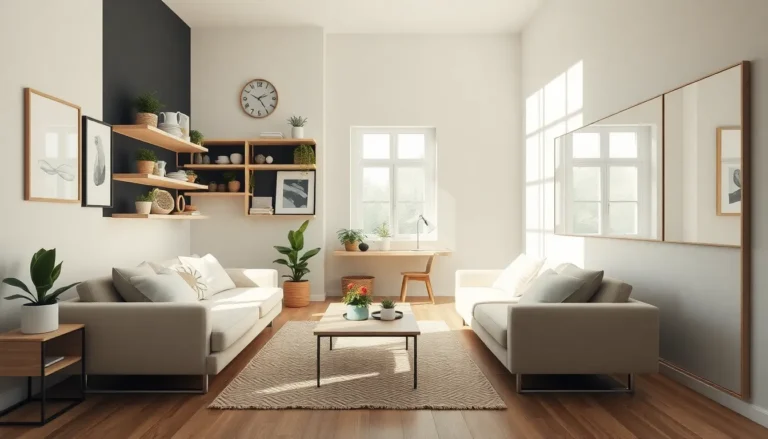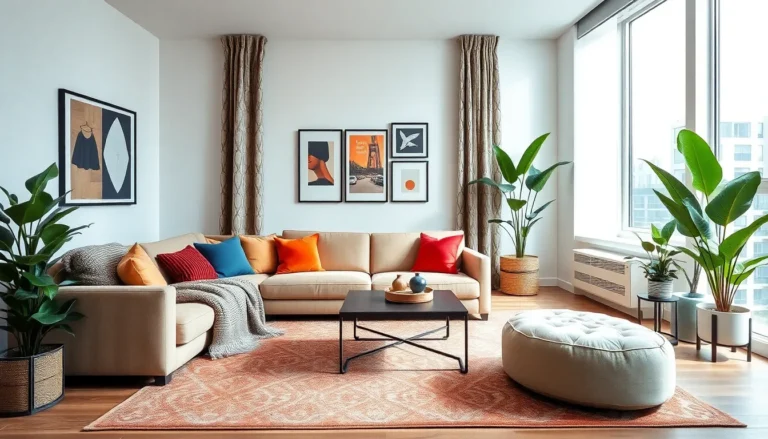Table of Contents
ToggleImagine walking into a café that feels like a warm hug on a chilly day. The right interior design can transform a simple coffee shop into a cozy haven where customers linger over lattes and pastries. With the right blend of style and comfort, a café can become the go-to spot for both casual meet-ups and serious study sessions.
Modern Cafe Interior Design Ideas
Modern café interiors combine functionality and aesthetics to create inviting spaces. These design ideas prioritize comfort and style, enhancing the overall customer experience.
Minimalist Aesthetic
Minimalist design emphasizes simplicity through clean lines and uncluttered spaces. Neutral colors dominate, often featuring shades of white, gray, and beige. Natural materials like wood or stone enhance warmth and texture. Furniture choices include streamlined tables and chairs that maintain an open feel. Successful minimalist cafés often highlight large windows, allowing for ample natural light, which improves the ambiance and relaxation level. Simple decor elements like wall art or potted plants add subtle character without overwhelming the space.
Bold Colors and Patterns
Bold colors play a crucial role in creating a lively atmosphere. Bright hues such as deep blues, vibrant yellows, or striking reds can energize a space. Patterns on upholstery or wall tiles introduce visual interest, inviting conversation amongst patrons. Accent walls painted in contrasting colors can break up monotony and create focal points. Artful murals or wallpaper may further reinforce a café’s theme or personality. Vibrant furniture pieces can act as statement elements, enhancing the overall dining experience by sparking joy and creativity among customers.
Cozy and Inviting Spaces

Creating a cozy and inviting café space enhances customer experience and encourages repeat visits. A well-considered design fosters warmth and comfort, making patrons feel at home.
Furniture Arrangement Tips
Effective furniture arrangement promotes social interaction and comfort. Group seating areas to encourage conversation, using couches and armchairs alongside traditional tables. Flexible layouts allow for small and large gatherings. Create pathways for easy movement, ensuring accessibility without overcrowding. Position tables near windows to take advantage of natural light. Use area rugs to define individual spaces, adding warmth and a sense of intimacy.
Lighting Techniques
Lighting plays a pivotal role in cultivating a welcoming ambiance. Combine ambient, task, and accent lighting for a balanced effect. Utilize pendant lights over tables for focused illumination. Soft, warm bulbs create a relaxed atmosphere, while string lights or fairy lights add a whimsical touch. Dimmers can adjust brightness throughout the day, catering to various moods and activities. Incorporate natural light with large windows or skylights to enhance the overall feel of the space.
Inspired Themes for Cafes
Café interiors can reflect various themes, enhancing ambiance and attracting diverse clientele. Exploring these design themes can elevate the customer experience.
Rustic and Vintage Styles
Rustic themes often evoke warmth and nostalgia. Using reclaimed wood, distressed furniture, and vintage décor elements creates a cozy environment. Consider incorporating antique pieces like old coffee grinders or vintage signs for added character. Accents like exposed brick walls or wrought iron fixtures can further establish a charming atmosphere. Customers enjoy the inviting feel of such spaces, encouraging them to linger and return.
Industrial Chic Look
Industrial chic spaces embrace an urban aesthetic with raw materials. Incorporating exposed beams, metal accents, and concrete floors gives a modern edge. Furnishing with metal tables and wooden chairs creates contrast while maintaining comfort. Large windows allow natural light to flood the space, enhancing its openness. Patrons appreciate the vibrant vibe, making it a popular spot for casual meetings or creative gatherings.
Functional Design Elements
Functional design elements enhance both utility and aesthetics within a café. Smart organization of space promotes customer interaction and comfort.
Effective Use of Space
Effective use of space creates a welcoming environment. Arranging seating in clusters encourages conversation among customers. Utilizing nooks for quieter gatherings provides options for patrons seeking solitude. Incorporating multi-functional furniture allows flexibility for events and daily operations. Low-partition dividers can define areas without closing off the space. Crafting distinct zones for different activities enhances overall flow and usability. These strategies prioritize both comfort and function, ensuring a versatile café experience.
Accessibility Considerations
Accessibility considerations ensure that every customer feels welcome. It’s crucial to provide clear pathways for wheelchair users. Designing at least one accessible restroom accommodates all patrons comfortably. Installing adjustable tables helps those with disabilities enjoy meals easily. Additional features like Braille menus enhance inclusivity for visually impaired customers. Ensuring proper lighting also aids everyone in navigating the space safely. These thoughtful design choices not only comply with regulations but create an inviting atmosphere for all.
Creating a captivating café interior goes beyond aesthetics; it’s about fostering an inviting atmosphere that draws customers in. Thoughtful design choices can transform a simple space into a vibrant hub for socializing and relaxation. By balancing comfort with style and incorporating elements like effective lighting and functional layouts, café owners can enhance the overall experience for their patrons.
Whether opting for a minimalist approach or embracing bold themes, the right interior design can make all the difference. Ultimately, a well-designed café not only attracts a diverse clientele but also encourages them to return time and again, making it a beloved community spot.







